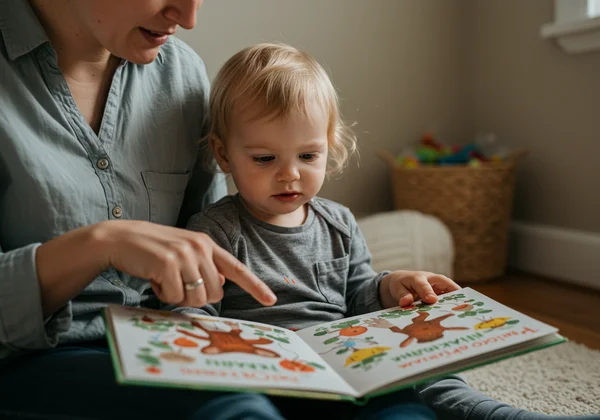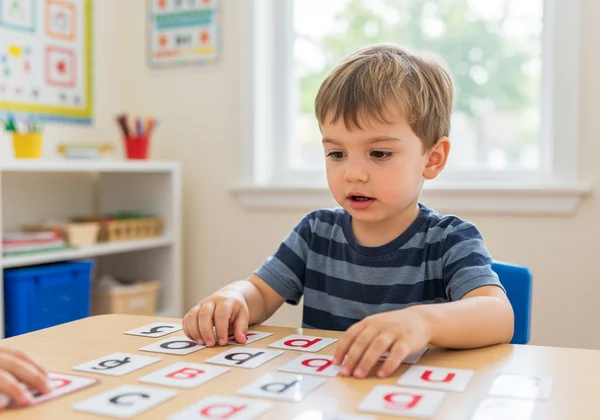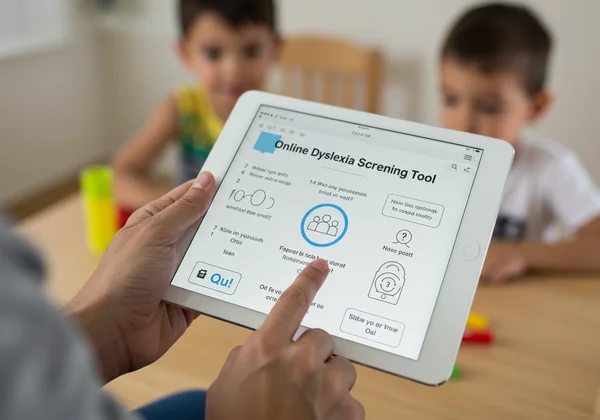Dyslexia Screening: Early Signs & Indicators in Toddlers & Preschoolers
Are you a parent noticing your young child struggling with language or pre-reading skills? It's natural to feel a mix of worry and uncertainty. What are the earliest signs of dyslexia in toddlers and preschoolers? This guide offers clarity on the subtle, early indicators of dyslexia, helping you understand what to look for and your next steps towards unlocking their reading potential. Early awareness and timely identification of potential challenges can profoundly impact your child's journey, setting them on a path to success with the right support from the start.
Why Early Detection of Dyslexia Matters
Understanding the early dyslexia signs in young children is paramount. Dyslexia is a specific learning disability in reading, often linked to challenges with phonological awareness. While a formal diagnosis typically occurs later, observing early indicators allows for timely support. Early detection doesn't mean labeling a child, but rather understanding their unique learning profile so that appropriate interventions can begin. This proactive approach can significantly impact their academic journey and self-esteem.
Understanding Foundational Pre-Reading Skills
Pre-reading skills are the building blocks for literacy. These include knowing the alphabet, recognizing letters, understanding that print carries meaning, and developing phonological awareness—the ability to hear, identify, and manipulate individual sounds (phonemes) in spoken words. Children develop these skills at different rates, but consistent difficulty in several areas can signal a need for closer observation. Robust foundational skills pave the way for reading success. If your child's grasp of these fundamentals appears uncertain, further investigation is highly recommended.

The Power of Early Intervention for Learning
The brain is most adaptable during the early years, making early intervention for learning incredibly powerful. When signs of dyslexia are recognized early, targeted strategies can be implemented, often minimizing future difficulties. This isn't about "fixing" dyslexia, but about teaching children in ways that align with their learning style. Early support can prevent a cascade of negative experiences, such as frustration and low self-esteem, which often accompany undiagnosed learning challenges. Providing children with these crucial tools early truly gives them a head start, and observing specific signs can guide you on where to focus your efforts.
Toddler Dyslexia Signs (Ages 2-3)
Identifying toddler dyslexia signs requires careful observation, as these indicators are often subtle and relate more to language development than direct reading. Parents are often the first to notice these patterns. Remember, these are potential indicators, not definitive proof. If you observe several of these, it warrants further attention.
Speech Development & Language Milestones
One of the earliest clues might be in speech development & language milestones. Toddlers at risk for dyslexia may have a history of late talking, or they might struggle with pronunciation even as they get older, often mispronouncing familiar words or having difficulty forming sentences. You might notice them using simpler language than peers, or having trouble recalling the right word. A family history of speech delay dyslexia can also be a significant indicator. Observe how your child articulates words and whether their vocabulary seems to lag behind that of other children their age.
Early Sound Play & Rhyming Challenges
Early sound play & rhyming challenges are important indicators of phonological awareness. A child at this age might not enjoy nursery rhymes, or they may struggle to recognize or produce rhyming words. For example, when you say "cat, hat, bat," they might not grasp the rhyming pattern. They might also find it difficult to play games involving sounds, like identifying words that start with the same sound. These playful interactions are crucial for developing the auditory skills necessary for reading. Difficulty with these activities can be an early red flag.

Preschool Dyslexia Indicators (Ages 3-5)
As children transition into preschool, the preschool dyslexia indicators become a bit more pronounced, moving closer to pre-literacy skills. These signs are still about readiness for reading, but they offer more direct insights. It's a critical period for observing these emerging skills.
Difficulties with Letters, Sounds, & Words
Children at this age may exhibit difficulties with letters, sounds, & words. This could manifest as trouble recognizing letters of the alphabet, even after repeated exposure. They might struggle to associate letters with their corresponding sounds (e.g., knowing that 'B' makes a /b/ sound). You might observe them having trouble writing their own name or recognizing simple words like "stop" or "go." Confusing letters that look similar (like 'b' and 'd') or sound similar is also a common observation. These pre-reading skills are crucial for literacy development.

Memory and Attention Patterns to Observe
Beyond direct language skills, certain memory and attention patterns to observe can also be related to dyslexia. Children may struggle with remembering sequences, like the days of the week or the alphabet in order. They might have difficulty following multi-step directions. While attention challenges can be linked to many factors, persistent difficulty with tasks requiring sequential memory or sustained focus on language-based activities could be relevant. Observing these broader cognitive development areas can provide a more complete picture.
What To Do If You Spot Early Signs
Spotting early signs can feel daunting, but it's an opportunity to provide timely support. Taking proactive steps can make a profound difference in your child's reading potential. You are your child's best advocate, and there are clear paths forward.
Communicating with Your Child's Educator
The first vital step is communicating with your child's educator. Share your observations and concerns with their preschool teacher or early childhood specialist. They can offer insights from the classroom environment and may have observed similar patterns. Working together, you can develop a plan for educational support and implement simple strategies at home and school. Teachers are valuable partners in this journey and can help monitor progress. Open dialogue fosters a supportive learning environment.
Taking the First Step: Online Screening Tools
To gain a clearer understanding, taking the first step: online screening tools can be incredibly helpful. Our free, professional, and easy-to-use online dyslexia screening tool provides immediate insights and is designed by experts. While it is not a formal diagnosis, it helps identify potential risks by assessing key reading and language processing abilities. It provides immediate insights and personalized suggestions based on the results. This preliminary screening can give you valuable information to discuss with educators or specialists. Explore your child's reading potential today with our simple screening.

Empowering Your Child's Reading Journey
Spotting early dyslexia signs in toddlers and preschoolers is a powerful, proactive step. While these indicators aren't a diagnosis, they offer crucial insights, enabling you to act swiftly with tailored support. Understanding pre-reading skills and language processing through early intervention can profoundly shape your child's academic and personal growth. If these signs resonate with your observations, we encourage you to take that vital first step. Our free online dyslexia screening tool offers a quick, expert-designed assessment and personalized insights, providing the clarity and direction needed to effectively support your child's unique reading potential.
Frequently Asked Questions About Early Dyslexia Signs
Can you test toddlers for dyslexia?
While you cannot formally "diagnose" dyslexia in toddlers (ages 2-3) because formal reading skills are not yet developed, you can observe early dyslexia signs related to language development and pre-reading skills. These include difficulties with speech development, rhyming, and recognizing sounds. Tools like the online dyslexia test for kids offer early screening to identify potential risk factors, guiding parents on when to seek further professional evaluation.
What are the earliest signs of dyslexia?
The earliest signs of dyslexia often appear in speech development & language milestones and early sound play & rhyming challenges. These can include delayed speech, persistent mispronunciations, difficulty learning nursery rhymes, or trouble recognizing rhyming words. As they approach preschool, difficulties with letters, sounds, & words like recognizing alphabet letters or associating letters with sounds become more apparent. Our free dyslexia test can help highlight these potential areas of concern.
Is an online dyslexia test accurate for young children?
An online dyslexia test like ours is a valuable dyslexia screening tool, not a diagnostic one. For young children, it helps identify patterns and potential risk factors by assessing foundational skills that are precursors to reading. It's designed by experts to provide a reliable preliminary assessment and guide parents on next steps, but it cannot replace a comprehensive formal diagnosis by a qualified professional. You can start a screening today to get immediate feedback.
When should I seek a formal dyslexia assessment?
You should seek a formal dyslexia assessment if your child consistently displays multiple early dyslexia signs through preschool and kindergarten, and especially if they continue to struggle with reading, spelling, and language skills into early elementary school (e.g., ages 5-7). An online screening tool can provide an initial indication of risk, helping you determine if a professional assessment is warranted. A professional assessment offers a definitive diagnosis and tailored intervention strategies.
How can parents help children with early dyslexia signs?
Parents can help children with early dyslexia signs by engaging in activities that build pre-reading skills and phonological awareness. This includes reading aloud frequently, playing rhyming games, practicing letter recognition, and focusing on sound awareness activities. Communicate closely with your child's educators and consider using resources like our online screening tool to understand potential areas of difficulty and receive personalized suggestions for support. Early action and consistent support can significantly improve a child's reading potential.